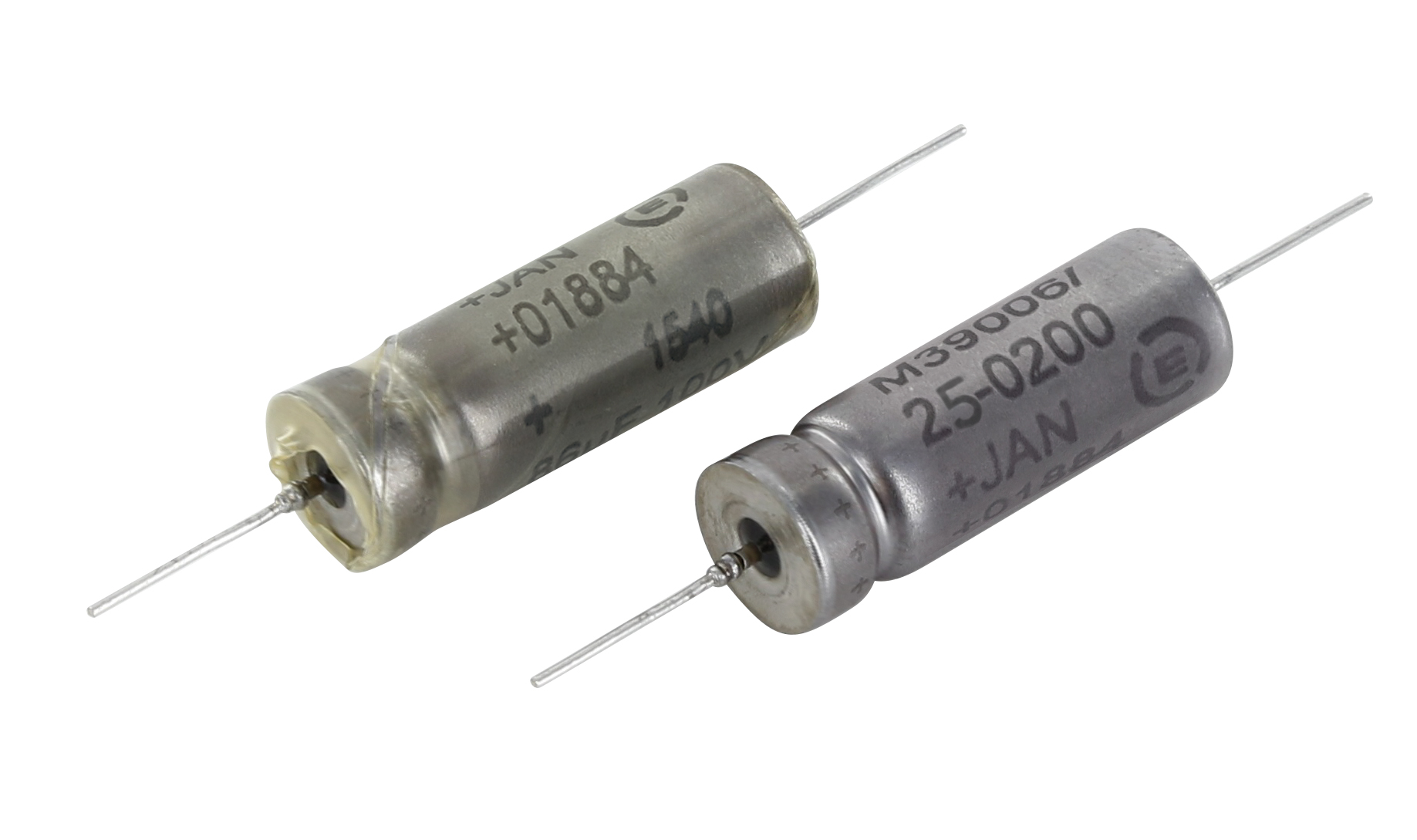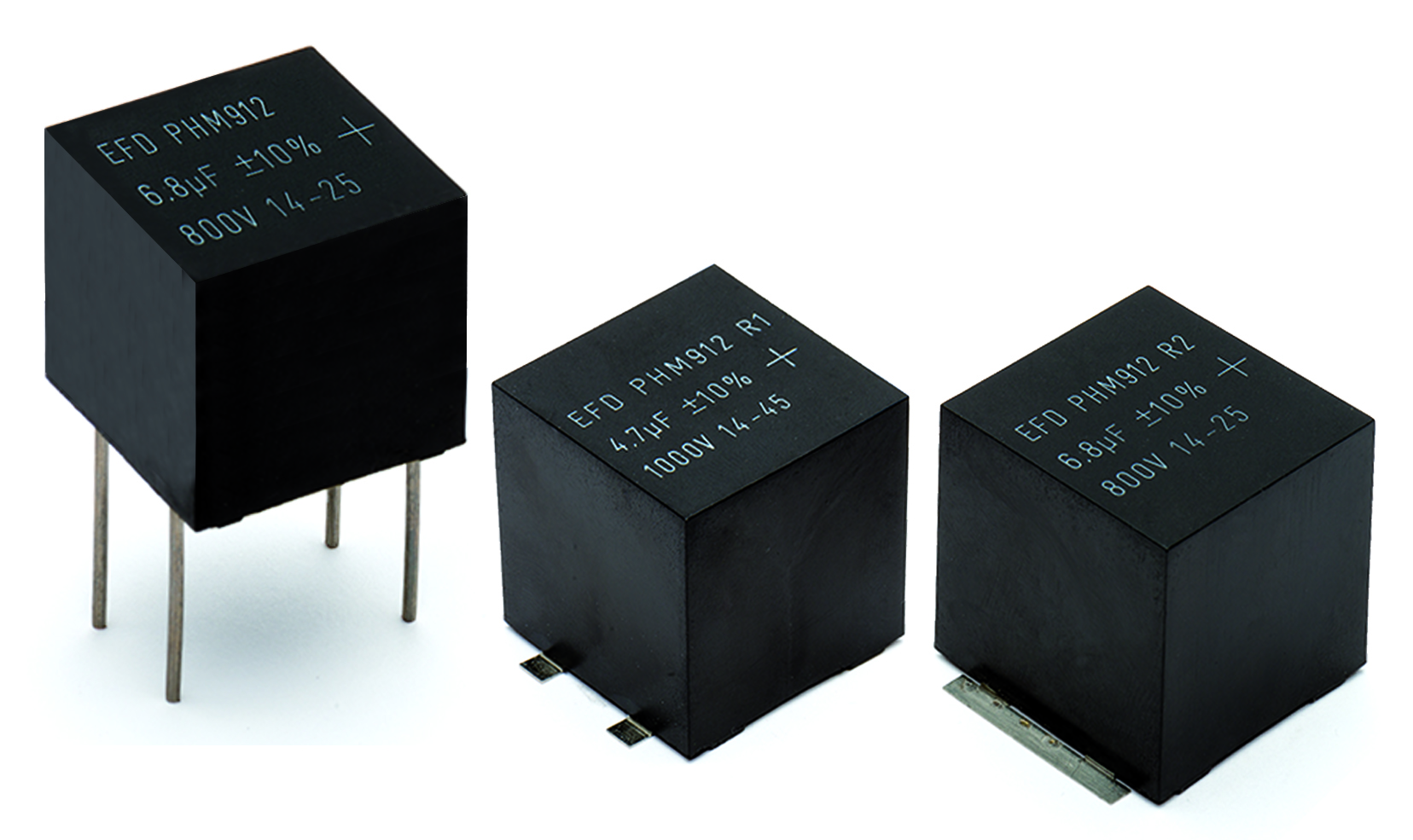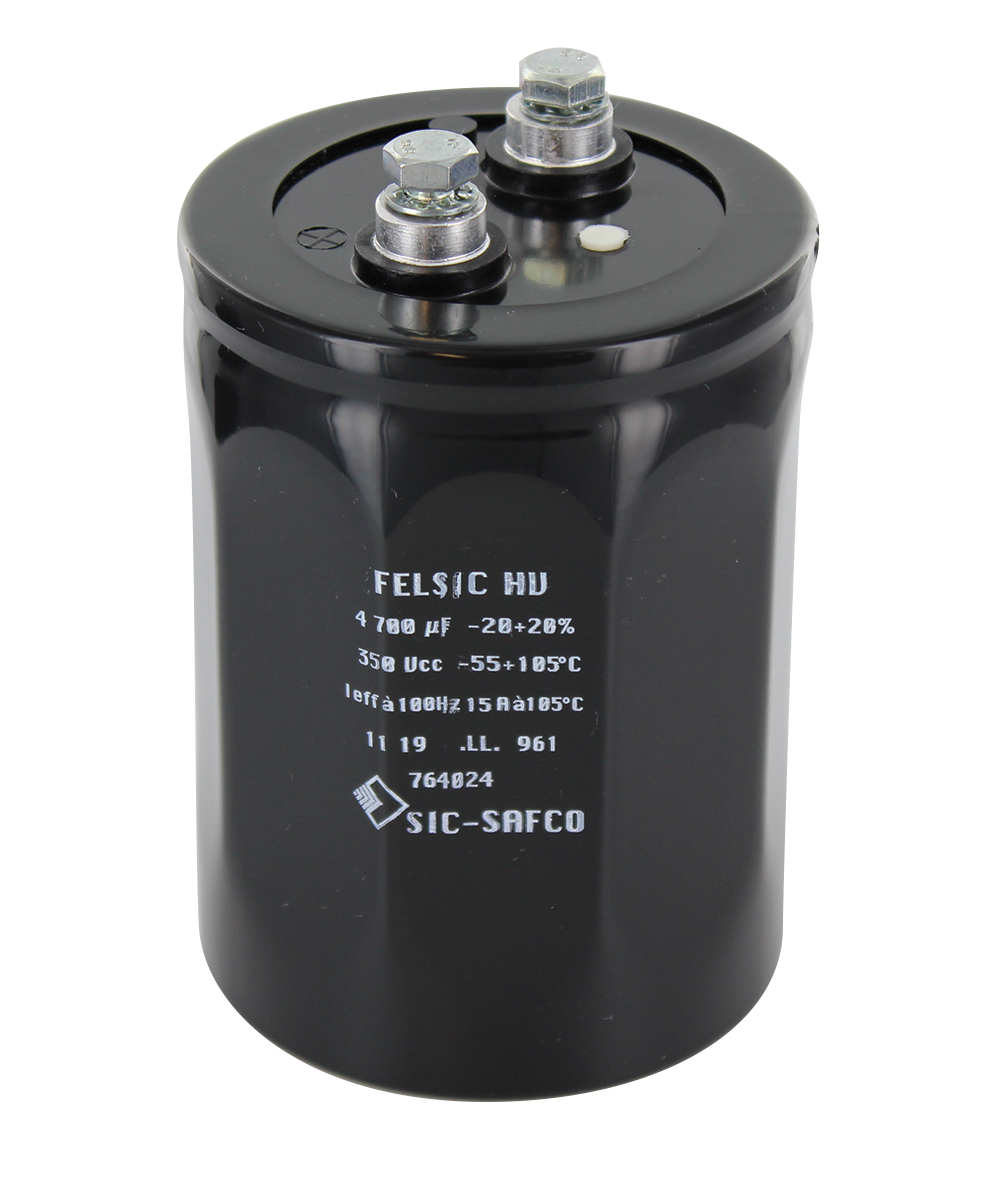Exxelia at PCIM
Exxelia will be showcasing high-reliability power solutions at PCIM on hall 6 booth #140 from June 05-07, 2018 in Nuremberg, Germany.
Two new ranges of MIL-qualified tantalum capacitors: MIL39006/22 & MIL39006/25
 The recently introduced ranges of MIL-qualified tantalum capacitors will be showcased on the company booth. MIL 39006/22 and MIL 39006/25 respectively equivalent to CLR79 and CLR81 types featuring hermetically sealed cylindrical tantalum cases and axial leads are available in T1, T2 T3 and T4 cases with extended capacitance and voltage ratings. MIL 39006/22 is qualified for voltages from 6V to 125V and provides from 1200µF @6V to 56µF @125V. MIL 39006/25 is qualified for voltages from 25V to 125V and delivers from 680µF @25V to 82µF @125V. Both ranges combine high energy density with a large operating temperature range of -55°C - +125°C and H vibrations and shocks resistance.
The recently introduced ranges of MIL-qualified tantalum capacitors will be showcased on the company booth. MIL 39006/22 and MIL 39006/25 respectively equivalent to CLR79 and CLR81 types featuring hermetically sealed cylindrical tantalum cases and axial leads are available in T1, T2 T3 and T4 cases with extended capacitance and voltage ratings. MIL 39006/22 is qualified for voltages from 6V to 125V and provides from 1200µF @6V to 56µF @125V. MIL 39006/25 is qualified for voltages from 25V to 125V and delivers from 680µF @25V to 82µF @125V. Both ranges combine high energy density with a large operating temperature range of -55°C - +125°C and H vibrations and shocks resistance.
PHM 912, very high energy density film capacitors
 PHM 912 is a new standard series of film capacitors based on a novel metallized plastic film dielectric from Dupont Teijin®. The PHM 912 capacitors are specifically designed for DC filtering or energy storage. Very stable in both temperature and frequency, they are well-adapted for applications such as filtering in H.F. switch mode power supplies, DC link or decoupling. The range can withstand temperatures up to 155°C and up to 175°C in custom version. With their high energy density, these capacitors allow highly integrated power filters. Their compact construction results in a low ESR, ESL and excellent high current and frequency performances. The series provides 250V @68µF and 0,27µF @1000V. The PHM 912 series makes significant advances over previous technologies by combining the benefits of excellent temperature resistance with superior energy densities, making it one of the most compact capacitors on the market.
PHM 912 is a new standard series of film capacitors based on a novel metallized plastic film dielectric from Dupont Teijin®. The PHM 912 capacitors are specifically designed for DC filtering or energy storage. Very stable in both temperature and frequency, they are well-adapted for applications such as filtering in H.F. switch mode power supplies, DC link or decoupling. The range can withstand temperatures up to 155°C and up to 175°C in custom version. With their high energy density, these capacitors allow highly integrated power filters. Their compact construction results in a low ESR, ESL and excellent high current and frequency performances. The series provides 250V @68µF and 0,27µF @1000V. The PHM 912 series makes significant advances over previous technologies by combining the benefits of excellent temperature resistance with superior energy densities, making it one of the most compact capacitors on the market.
Felsic HV, long lifetime and high voltage screw terminal aluminum electrolytic capacitor
 The Felsic HV family of aluminum electrolytic screw terminal capacitors provides great performances in energy density combined with ultra-long lifetime. For instance, 6 800µF @450V fit into a volume of Ø77x220mm and can withstand 200,000 hours between 0 to 70° under 37Amps, which makes them the perfect choice for use in rolling stock traction systems or the CVS. The family also has one of the lowest ESR of its class with less than 10m0hms in most cases. Products are available for voltages from 160 to 450Vdc, and offer capacitance values from 1500μF up to 47 000μF offering the best compromise between reliability and compactness.
The Felsic HV family of aluminum electrolytic screw terminal capacitors provides great performances in energy density combined with ultra-long lifetime. For instance, 6 800µF @450V fit into a volume of Ø77x220mm and can withstand 200,000 hours between 0 to 70° under 37Amps, which makes them the perfect choice for use in rolling stock traction systems or the CVS. The family also has one of the lowest ESR of its class with less than 10m0hms in most cases. Products are available for voltages from 160 to 450Vdc, and offer capacitance values from 1500μF up to 47 000μF offering the best compromise between reliability and compactness.